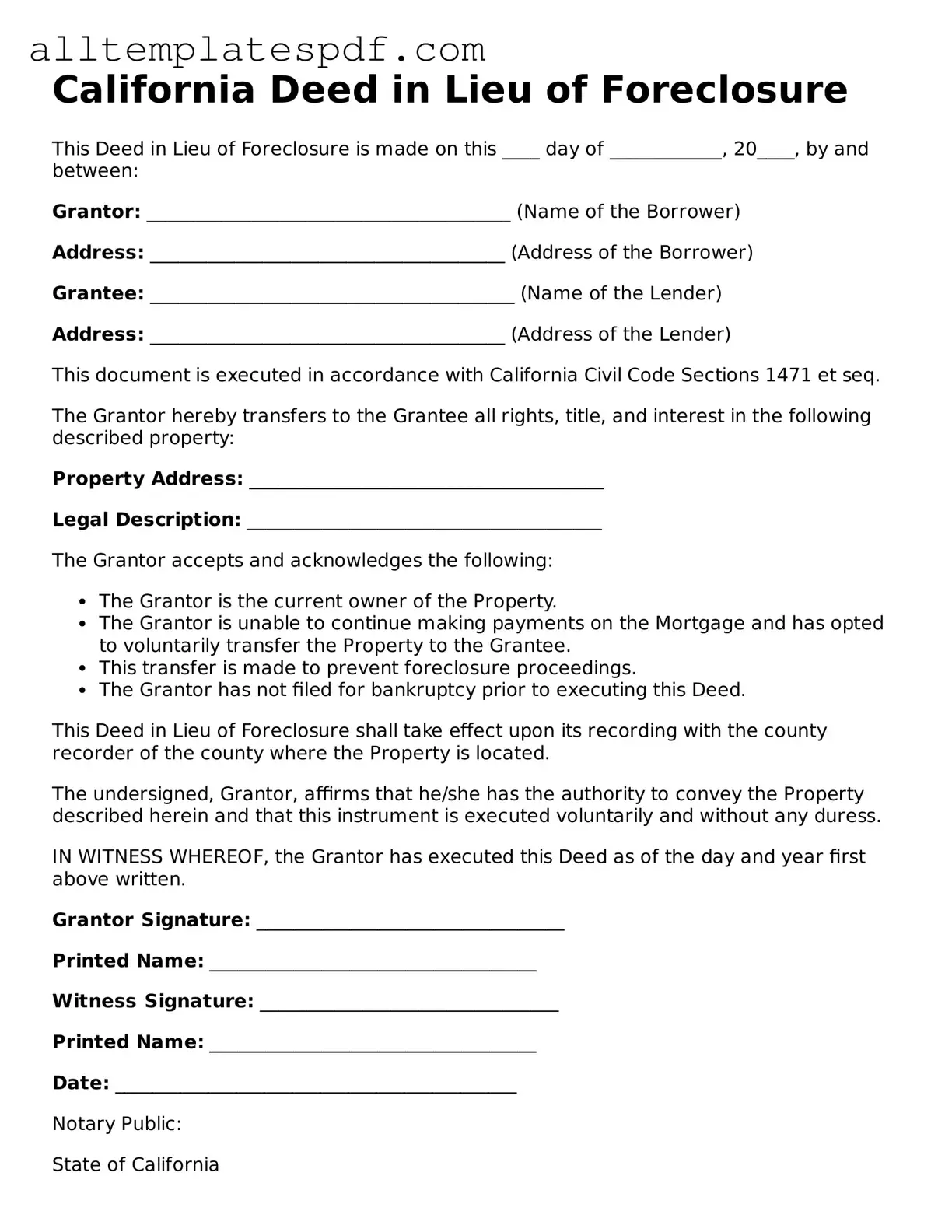Filling out the California Deed in Lieu of Foreclosure form can be a daunting task, and mistakes can lead to delays or complications. One common error occurs when individuals fail to provide accurate property information. This includes the legal description of the property, which is crucial for the deed to be valid. Omitting or misrepresenting this information can result in legal challenges later on.
Another frequent mistake is neglecting to include all necessary parties in the deed. If there are multiple owners or lienholders, each must be properly identified and included in the document. Failing to do so can invalidate the deed, leaving the property still encumbered by existing liens or ownership claims.
People also often overlook the importance of signatures. Every required party must sign the form for it to be legally binding. In some cases, individuals may assume that a single signature is sufficient, but this is not true when multiple parties are involved. Ensuring that all signatures are present and correctly dated is essential.
Additionally, many individuals do not take the time to have the deed notarized. A notary public serves as an impartial witness to the signing of the document, which adds an extra layer of authenticity. Without notarization, the deed may be questioned, leading to potential disputes or challenges.
Another mistake is failing to provide the necessary supporting documentation. Along with the deed, additional documents may be required to prove ownership or to clarify the circumstances surrounding the foreclosure. Not including these can slow down the process significantly.
Lastly, individuals sometimes do not fully understand the implications of signing a Deed in Lieu of Foreclosure. This form transfers ownership of the property back to the lender, and it can have long-term effects on credit and future borrowing capabilities. It is vital to consider these implications carefully before proceeding.
